Lately, even more of us have begun cooking and turning our attention to the outdoors. Mushroom hunting is an activity that combines these two loves — cooking and spending more time savoring the healing power of nature — and Oregon’s coastal forests are the ideal place to pursue it. Here, you’ll find an ecosystem fed by frequent rain and moderate temperatures, where enormous evergreen trees thrive and support wildlife, mosses, and several types of edible mushrooms. As this Oregon mushroom guide will show you, mushroom hunting takes hiking to a whole new level.
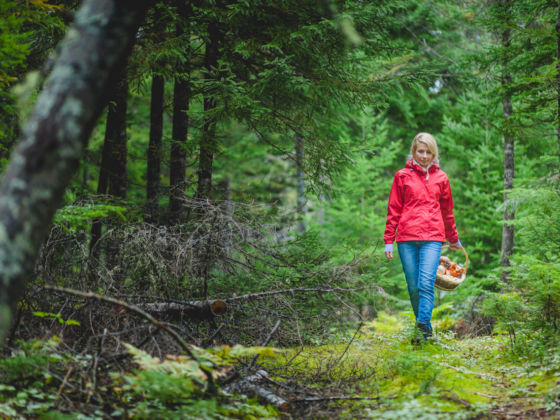
How to Hunt for Mushrooms in Oregon's Coastal Rainforest
Hiking taken to a new level

Photo: Laszlo Dobos/Shutterstock
Hiking on wooded paths, you feel enveloped by verdant life, but when you step off the trail, your sense of immersion deepens. The hunt for delicious fungi draws you up and down hillsides, through the tender branches of young western hemlocks, and around thick, long-leaved ferns. You feel the forest under your feet. You smell it more fully. You see the forest as it truly is, from the inside.
In the heart of the largest temperate rainforest in the world, Douglas firs, cedars, and other evergreens, along with alder and bigleaf maple, support a lush, diverse ecosystem. The needles, leaves, and cones that fall from trees and decay into rich humus on the forest floor become rich, earthy-scented duff, which provides sustenance to a variety of wildlife. Just under your feet, decay feeds regeneration. When you reach down and feel and smell this earth in search of mushrooms, you’re encountering the stuff of life itself.
Where, when, and how to hunt Oregon mushrooms
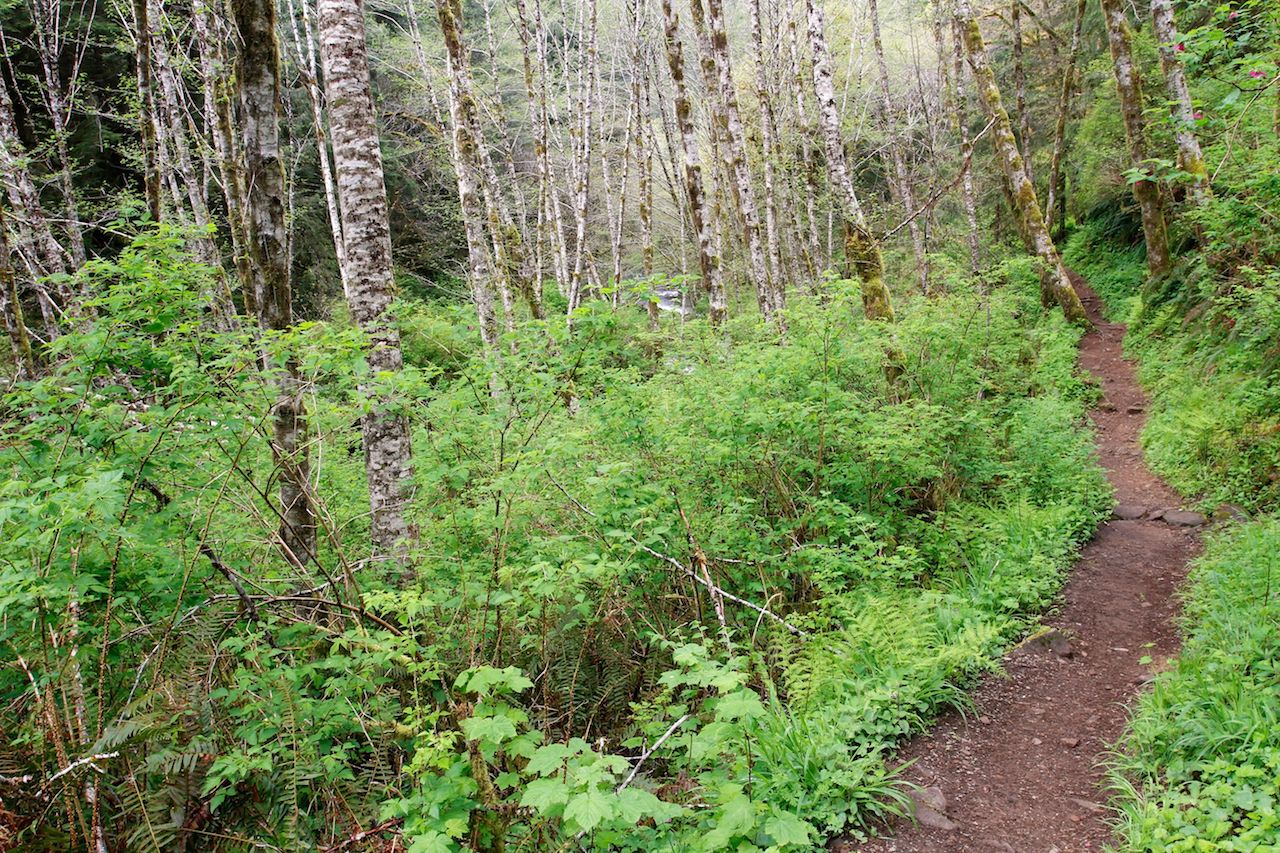
Photo: Robert Mutch/Shutterstock
The Tillamook State Forest and Siuslaw National Forest encompass large swaths of land where mushrooms are found. Rainforest extends from the edge of the coast up through the coast range, all of which is prime territory for fungi. If you ask experienced foragers where to go, they’ll be quite helpful in narrowing your search, but they usually won’t tell you about any precise spots. This is because mushrooms sprout up in the same patches of ground every year, so hunters are hesitant to give away their hard-won knowledge.
Anyway, it’s more fun to try to find your own spots. Consulting maps and satellite images, and looking for remote roads that traverse wild forest, can yield unique off-trail experiences. Lightly used hiking trails are also a great place to start, not only because mushrooms are easier to find but also because of the calm, natural solitude such excursions afford.
It’s best to go mushroom hunting without expecting to find dinner. People who go out hoping to encounter edible mushrooms on their first try may be disappointed. If you’re looking at the right time, you’ll almost certainly find fungi, but there’s a good chance you won’t be able to identify them — or, if they can be identified, they often aren’t edible.
Mushroom hunters are content to be in the forest, encountering its smells, sights, and sounds. By engaging in the hunt, your relationship to the forest changes. Looking at the ground, you’re more likely to find massive slugs and all variety of crawling invertebrates. Looking up, the forest entirely surrounds you.
Timing can be tricky. In general, the best season for finding mushrooms in the Pacific Northwest is between September and November. However, different mushrooms fruit at different times, and even mushrooms of the same variety in the same location will fruit on their own time from year to year, dependent on weather and other factors.
For visitors to the region, timing depends a lot on travelers’ overall plans for the trip and on their tolerance for rain. To be honest, anyone visiting a Pacific Northwest coastal forest in any season should be prepared for at least some rain. In September, visitors are more likely to enjoy some sun, but a lack of precipitation could mean there are few mushrooms. A visit in October or November is more likely to yield mushroom sightings, but there’s also a significant chance for several days of rain in a row.
Oregon mushrooms hunting safety and information

Photo: Tuk sunchild/Shutterstock
We can’t overstate the importance of this: A few types of mushrooms can kill you. Many others can make you sick. Consult the safety information below, and never eat a mushroom unless you’re absolutely certain of your identification.
Yet while the risks of eating wild mushrooms can be quite serious, people are too often scared away from hunting. Several mushrooms are easy to safely identify. Some basic caution and preparation can help to keep you safe.
The United States Department of Agriculture’s Agricultural Research Service announced this year that it had developed a test strip that can determine whether a mushroom contains potentially lethal amanitin toxins — and even whether someone has ingested them. While these strips should be available soon, they don’t test for other dangerous toxins, so they shouldn’t be relied on alone.
Your best defense against mushroom poisoning is a good guidebook and, if possible, help from a more experienced hunter. All That the Rain Promises, and More by David Arora is an incredibly useful text. Its beautiful photographs and anecdotes from mushroom hunting enthusiasts are a joy to read. It’s such a good book that any forest-lover will enjoy it, even if they’re not yet actively hunting or planning on eating fungi.
The Oregon Mycological Society, based in Portland, is one of many organizations and resources for learning about mushrooms. Their annual fall mushroom show is a great place to learn and experience mushrooms, and could be a good event to plan a trip around. Finding mushrooms at farmers markets can also be a great way to see, smell, and taste edible varieties and chat up experienced foragers. Some mushrooms, like the Matsutake, can best be identified by smell, so encountering it at a show or a market can help to make identification much easier.
Mushrooms you can find in Oregon
Chanterelles

Photo: Magic Stocks/Shutterstock
Chanterelles are an iconic edible mushroom and can be found on the forest floor all over the Pacific Northwest. Their wavy, conical shape is unique and different from the archetypical round-capped mushroom. They have a subtle, elegant, earthy, and an occasionally almost fruity flavor. Cream of Chanterelle soup is a classic recipe. However, you may prefer to eat chanterelles on their own with just a little butter or oil to enjoy the subtleties of their flavor and texture.
Cauliflower mushroom

Photo: Pavel Veber/Shutterstock
The cauliflower mushroom looks, from a distance, like a cauliflower. Up close, its slightly yellow flesh looks more like egg noodles. Unlike the Chanterelle, Cauliflower mushrooms grow from the wood near the base of conifers, especially pine. As the largest mushroom on this list, it ranges from cauliflower-sized up to an incredible three feet in diameter. It should be cooked thoroughly to moderate its chewy texture and can be added to a variety of dishes.
Lobster mushroom
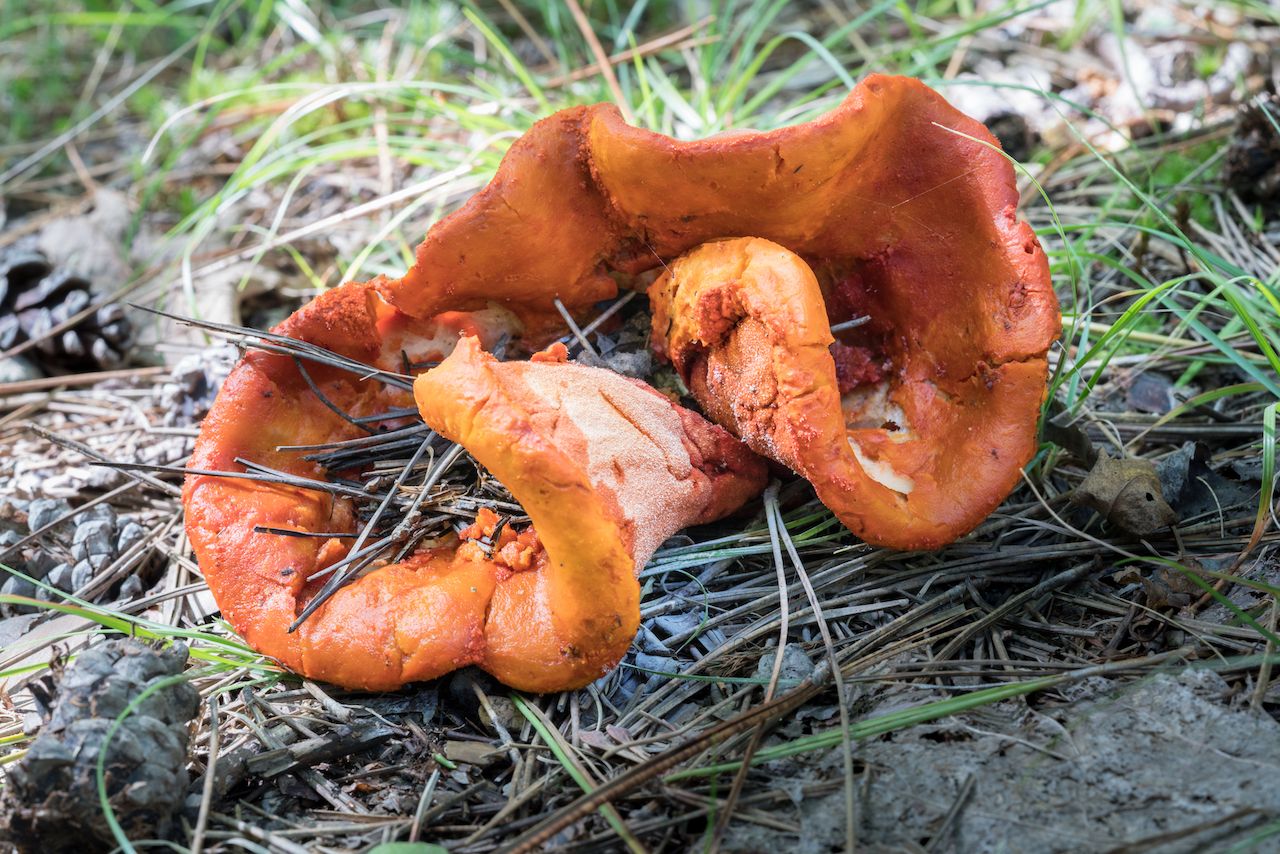
Photo: Kimberly Boyles/Shutterstock
The lobster mushroom usually has a lobster-like color but is sometimes a deeper red or even slightly purple. It’s one of the few mushrooms that is actually a parasite, feeding on other mushrooms and engulfing them. To the untrained eye, a Lobster mushroom can sometimes look like a chanterelle due to its inverted-pyramid shape and orange color. You can distinguish it from the chanterelle by its gills. While the chanterelle has forking gills, the Lobster mushroom has unforked gills or no gills at all. With its dense texture; mouth-feel; and slightly nutty, sometimes buttery, flavor, it’s delicious when sauteed.
Oyster mushroom
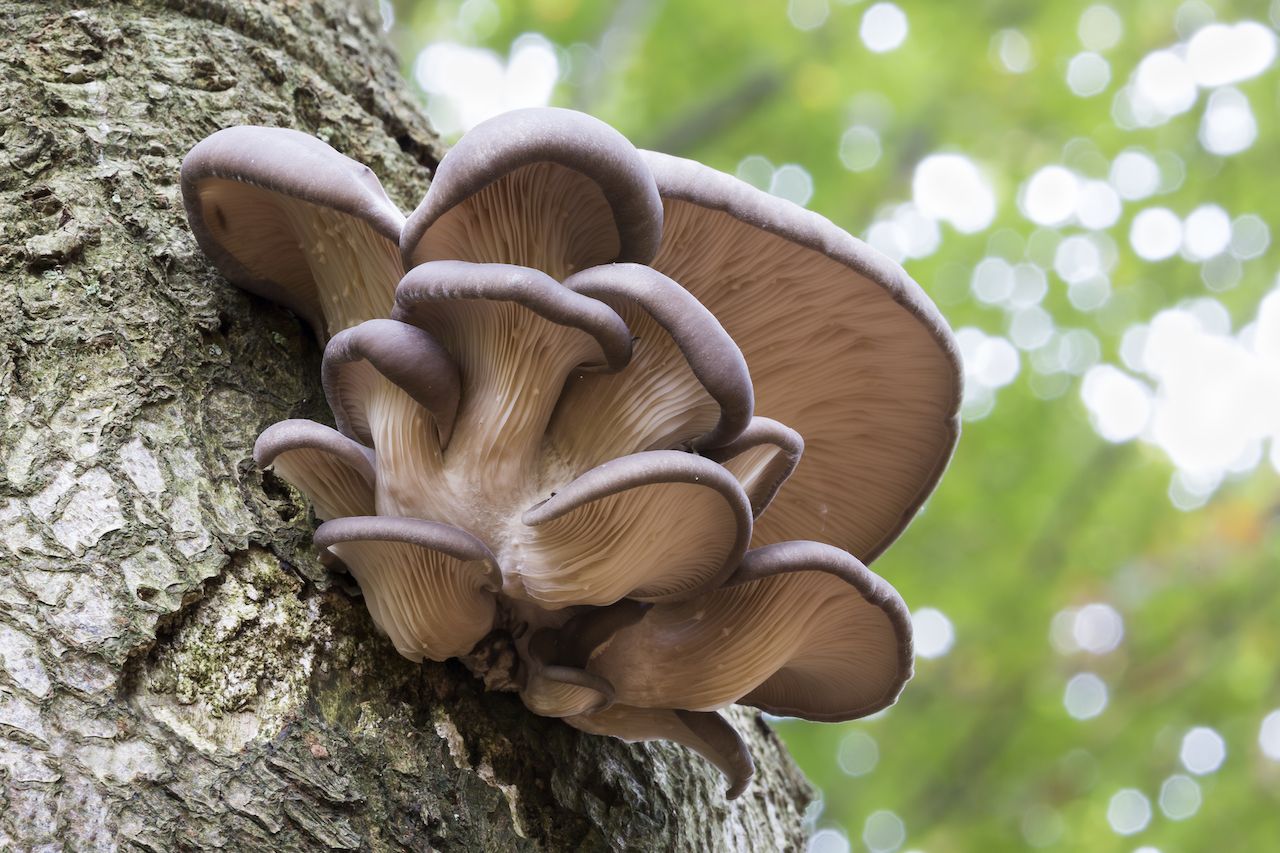
Photo: Gertjan Hooijer/Shutterstock
True to its name, the oyster mushroom can taste mildly of the sea. It grows like shelves on dead trees or stumps, with its stem perpendicular to its cap. It can be grown commercially on dead wood but always tastes better when you find it yourself.
More
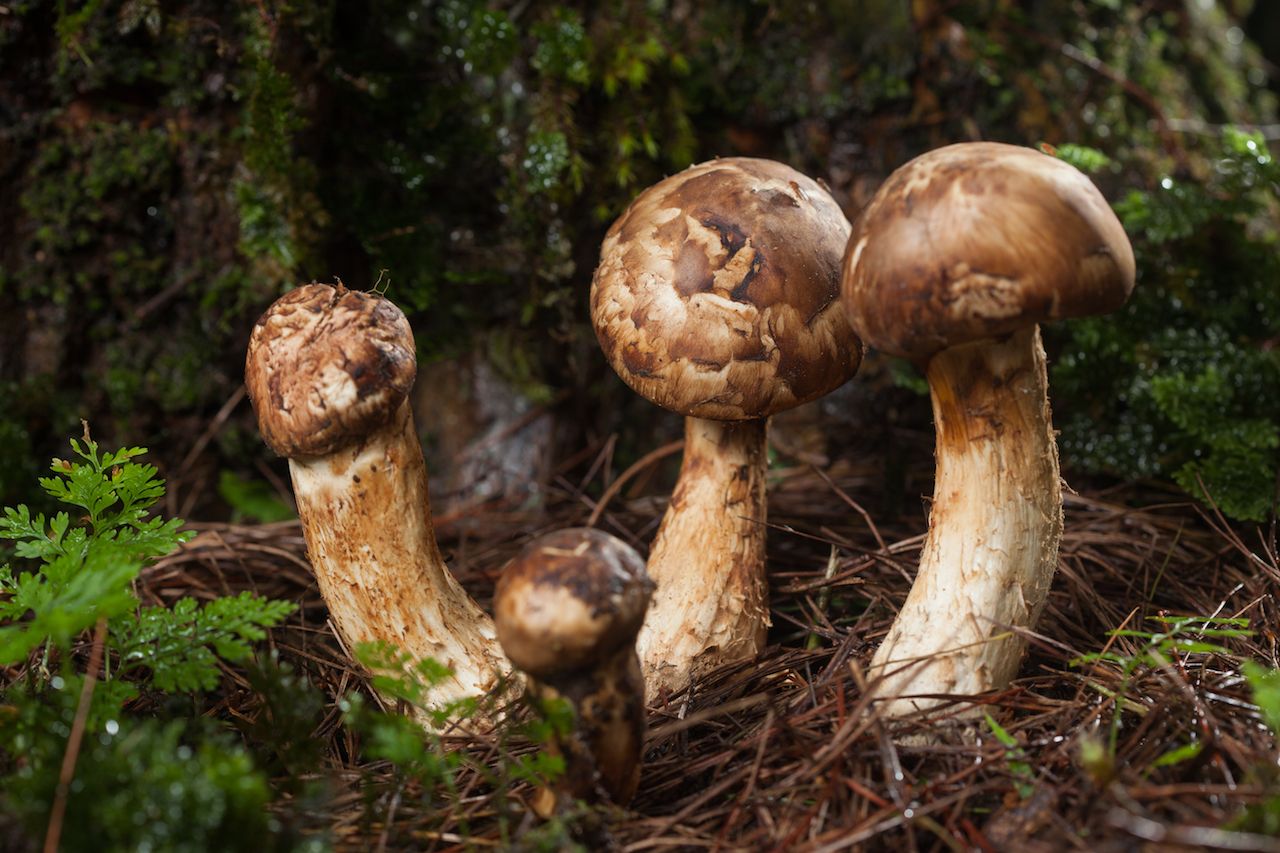
Photo: puttography/Shutterstock
Other commonly found, delicious mushrooms include Matsutake and Porcini. There are dozens of other varieties, but these can more easily be misidentified. As you learn more about mushrooms, the more the hunt will yield interesting specimens, and, hopefully, a delicious bounty.
A version of this article about mushroom hunting was previously published on April 9, 2019, by George Zamzow and was updated on August, 25, 2020, by Outdoor editor Noelle Salmi.